What are open source databases?
Open source databases are database systems whose source code is available to the public for use, modification, and distribution. Unlike proprietary databases, open source databases allow developers to access the code base, customize it to fit their needs, and share those changes with the broader community.
These databases support various data models, such as relational, document, and key-value, catering to different application requirements. The open source nature of these databases often results in a large community of users and contributors who help improve the software through bug reports, feature requests, and patches.
Significantly, open source databases are available free of charge, compared to the high cost of traditional database solutions from vendors like Oracle and Microsoft. Over the years, open source databases have matured and now provide capabilities comparable to the best proprietary solutions, leading to their massive adoption. According to the DB-Engines ranking, 6 of the world’s top 10 databases are open source.
This is part of a series of articles about open source AI
Closed source database vs open source database
There are several important differences between closed source and open source databases.
Licensing and Cost
Closed source databases typically require expensive licensing fees, which can be a significant financial burden for organizations. These fees may include costs for the software itself, per-user or per-core licensing, and additional costs for support and updates.
Open source databases are usually available for free, eliminating licensing costs and making them an economical choice for startups and organizations with limited budgets.
Customization and Flexibility
Closed source databases offer limited flexibility in terms of customization, as the source code is not accessible to users. Customizations often depend on the vendor’s willingness to accommodate organization-specific needs, which may involve additional costs and delays.
Open source databases provide complete access to the source code. This allows developers to modify and optimize the database to meet their requirements, resulting in enhanced functionality and performance.
Community and Support
Closed source databases rely primarily on vendor-provided support, which may involve substantial costs. The support quality can vary and is dependent on the vendor’s priorities and resources.
Open source databases often benefit from a large and active community of users and developers. This community-driven support includes extensive documentation, forums, user-contributed modules, and patches. While professional support services for open source databases are available, the free community resources often provide sufficient assistance.
Innovation and Development
Closed source databases can be updated frequently or infrequently depending on the provider. Innovation is typically driven by the vendor’s internal development team, which may limit the scope and speed of new features and improvements.
Open source databases depend on contributions from a global pool of developers. This collaborative environment fosters rapid innovation, with new features, performance enhancements, and bug fixes being incorporated quickly.
Security and Transparency
Closed source databases are proprietary in nature, which means that users cannot inspect the source code to understand how the database operates or to verify its security measures. This lack of transparency can raise concerns about hidden vulnerabilities and backdoors.
Open source databases offer complete transparency, allowing users to audit the code, identify potential security issues, and contribute to their resolution. This builds trust and ensures that security can be independently verified.
Benefits of using open source databases
Open source databases offer a range of advantages that make them appealing to companies and developers. Here are some of the key benefits of using open source databases:
- Cost savings: Open source databases eliminate the need for expensive licensing fees, making them an attractive option for startups and organizations with limited budgets.
- Flexibility and customization: The availability of source code allows developers to customize the database to meet specific requirements, enhancing functionality and performance.
- Community support: A large and active community often surrounds open source databases. This community provides extensive documentation, forums, and user-contributed modules.
- Transparency: Users can inspect the code to understand how the database works and verify security measures. This transparency builds trust and enables security audits.
- Innovation: Open source projects benefit from the contributions of developers worldwide, leading to rapid innovation and the inclusion of cutting-edge features.
- No vendor lock-in: With open source databases, organizations are not tied to a single vendor. This independence allows for greater freedom in choosing service providers and migrating between different systems.
Tips from the expert

Justin George
Solution Architect
Justin George is a seasoned tech leader who delivers high-impact technical strategies to help optimize key applications such as Kafka, Cassandra, and Redis.
In my experience, here are tips that can help you make better use of open source databases:
- Understand the licensing: Different open source databases have different licensing terms (e.g., GPL, MIT, Apache). Ensure you understand the implications for commercial use, especially concerning derivative works and redistribution.
- Contribute to the community: Contributing code, documentation, or even just feedback can help improve the database and gain insights into its internals, leading to better optimization and troubleshooting for your specific use cases.
- Use advanced indexing techniques: Implement advanced indexing techniques like full-text search, B-tree, and GiST indexes to improve query performance. PostgreSQL, for example, supports several sophisticated indexing methods.
- Implement sharding for scalability: For databases like MongoDB or Cassandra, implement sharding to distribute data across multiple nodes. This ensures the database can handle large datasets and high-throughput applications efficiently.
- Monitor performance metrics: Use monitoring tools like Prometheus, Grafana, or database-specific solutions to keep an eye on performance metrics. Understanding I/O performance, query execution times, and memory usage is crucial for optimization.
Top open source databases to consider
1. MySQL

MySQL is a widely-used relational database management system (RDBMS) developed by Oracle Corporation. Known for its high performance, reliability, and ease of use, MySQL is used in many web applications, including large-scale websites like Facebook, Twitter, and YouTube.
Licensing:
Dual-licensed under the GNU General Public License (GPL) and a commercial license.
Features:
- ACID compliance: Ensures reliable processing of transactions through Atomicity, Consistency, Isolation, and Durability.
- Master-slave replication: Allows data to be replicated across multiple servers to ensure high availability and redundancy.
- Multiple storage engines: Supports various storage engines such as InnoDB for transactional support and MyISAM for read-heavy applications.
- Full-text indexing and searching: Provides advanced search capabilities within text fields.
- Security features: Includes user authentication, SSL support, and data encryption for secure data management.
Key use cases:
- Web-based applications: Powers dynamic websites and applications with robust data handling capabilities.
- eCommerce platforms: Manages product catalogs, customer data, and transactions.
- Data warehousing: Supports large-scale data analysis and reporting.
- Logging applications: Efficiently stores and retrieves log data for monitoring and analysis.
- Content management systems: Provides a foundation for managing digital content across various platforms.

Source: MySQL
2. PostgreSQL
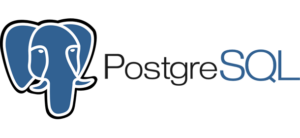
PostgreSQL, often referred to as Postgres, is an open source relational database system known for its extensibility and standards compliance. Managed by the PostgreSQL Global Development Group, it supports both SQL and JSON querying, making it suitable for both relational and non-relational data. PostgreSQL is highly customizable and supports a range of applications, from small single-machine applications to large internet-facing applications.
Licensing:
PostgreSQL License (similar to MIT License).
Features:
- ACID compliance: Guarantees data integrity through transaction management.
- Advanced indexing techniques: Supports B-tree, hash, GiST, GIN, and SP-GiST indexing for efficient data retrieval.
- Support for JSON and XML: Enables flexible document-based storage alongside relational data.
- Full support for foreign keys, joins, views, triggers, and stored procedures: Enhances data integrity and simplifies complex queries.
- MVCC (Multi-Version Concurrency Control): Improves performance and allows concurrent transactions without locking.
Key use cases:
- Financial systems: Manages complex transactions and ensures data integrity.
- Geospatial databases: Supports advanced spatial data types and queries with PostGIS extension.
- Web applications: Powers dynamic content and handles high traffic efficiently.
- Scientific databases: Stores and processes large volumes of scientific data.
- Data warehousing: Supports complex queries and analytics on large datasets.
3. SQLite

SQLite is a self-contained, serverless, zero-configuration database engine. It can be embedded into applications, providing a lightweight and efficient way to manage local storage. SQLite’s simplicity and reliability have made it a popular choice for mobile applications, desktop software, and IoT devices.
Licensing:
Public domain.
Features:
- Zero configuration: Requires no server setup or administration, making it easy to integrate and use.
- Lightweight: Has a small footprint, suitable for embedded systems and mobile devices.
- Cross-platform support: Runs on various operating systems including Windows, macOS, Linux, and Android.
- ACID-compliant transactions: Ensures data reliability and integrity through robust transaction support.
- Full-featured SQL implementation: Supports most of the SQL92 standard and provides a wide range of functionalities.
Key use cases:
- Embedded databases in mobile applications: Provides local data storage for mobile apps.
- Local storage for desktop applications: Manages local data efficiently for desktop software.
- Unit tests and prototyping: Suitable for testing and developing database-driven applications.
- IoT devices: Provides lightweight data storage solutions for IoT applications.
- Small to medium-sized websites: Manages content and user data for smaller web projects.
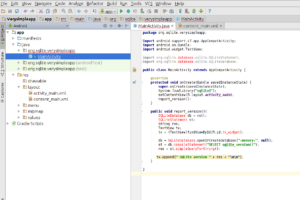
Source: SQLite
4. MariaDB

MariaDB is a community-developed fork of MySQL, created by the original developers of MySQL to ensure the database remains free and open source after its acquisition by Oracle. It aims to provide a secure, high-performance alternative to MySQL, with a strong focus on compatibility and enhanced features.
Licensing:
GNU General Public License (GPL).
Features:
- Enhanced query optimization: Improves performance for complex queries and large datasets.
- New storage engines: Includes innovative storage engines like Aria for transactional support and ColumnStore for analytics.
- Improved replication: Features advanced replication options, including multi-source replication and parallel replication.
- Compatibility with MySQL: Maintains drop-in compatibility with MySQL, allowing easy migration.
Security features: Offers improved security protocols and data encryption options.
Key use cases:
- eCommerce platforms: Supports reliable and scalable online stores.
- Enterprise-grade applications: Supports large-scale applications with complex data requirements.
- Web applications: Provides a solid foundation for dynamic web applications.
- Data warehousing: Enables efficient data analysis and reporting.
- Cloud-based applications: Integrates with cloud infrastructure for scalable and resilient solutions.
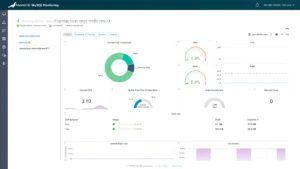
Source: MariaDB
5. Apache Cassandra
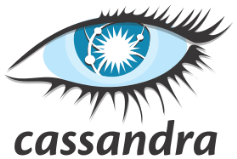
Apache Cassandra is a highly scalable NoSQL database that can handle large amounts of data across many commodity servers with no single point of failure. It offers high availability and fault tolerance, making it suitable for applications that require large-scale data distribution and real-time data processing. Developed by Facebook and later open-sourced, Cassandra is favored by major tech companies for its ability to scale horizontally and handle massive amounts of data.
Licensing:
Apache License 2.0.
Features:
- Distributed and decentralized architecture: Ensures data is distributed evenly across nodes, eliminating single points of failure.
- Linear scalability: Allows seamless addition of nodes to increase capacity and performance.
- Fault tolerance: Automatically replicates data across multiple nodes for high availability.
- Tunable consistency: Offers flexible consistency levels from strong to eventual consistency based on application needs.
- Support for SQL-like Query Language (CQL): Provides a familiar querying syntax for easier data manipulation.
Key use cases:
- Real-time big data applications: Handles large-scale real-time data processing for analytics and monitoring.
- Logging and event tracking: Efficiently stores and retrieves large volumes of log data.
- IoT applications: Manages time-series data and real-time processing for IoT devices.
- Fraud detection: Provides rapid data processing and analysis for detecting fraudulent activities.
- Messaging systems: Supports high-throughput, low-latency messaging and communication platforms.
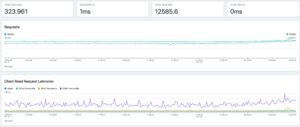
Source: Cassandra
6. Redis
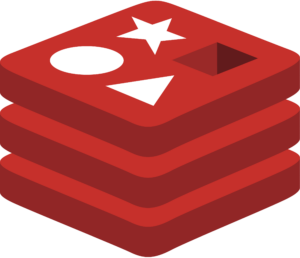
Redis is an in-memory key-value store known for its high performance, flexibility, and support for various data structures. It is commonly used as a cache, message broker, and in real-time analytics. Redis supports data structures such as strings, hashes, lists, sets, and sorted sets.
Licensing:
BSD License with a commercial license option.
Features:
- In-memory data storage: Provides extremely fast read and write operations by storing data in memory.
- Persistence options: Supports RDB snapshots and append-only file (AOF) for data durability.
- Pub/sub messaging: Enables real-time messaging through publish/subscribe channels.
- Lua scripting: Allows server-side scripting for complex operations.
- Built-in replication: Offers master-slave replication for data redundancy and failover.
Key use cases:
- Caching: Provides fast data retrieval for frequently accessed data.
- Real-time analytics: Powers real-time data processing and analytics applications.
- Session management: Manages user sessions in web applications.
- Message queuing: Supports efficient message brokering and task queues.
- Leaderboards and counting: Handles fast increment/decrement operations for leaderboards and counters.
7. Valkey
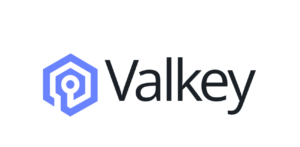
Valkey, a fork of Redis created by original Redis contributors, is a key-value store that provides high performance and scalability for modern applications. Its architecture is optimized for distributed environments, allowing it to handle large volumes of data with low latency. Valkey is particularly suitable for applications requiring fast access to data and high availability.
Licensing:
BSD License.
Features:
- Distributed architecture: Ensures data is distributed across multiple nodes for scalability and fault tolerance.
- High throughput: Provides rapid read and write operations to handle high-transaction workloads.
- Flexible data models: Supports various data types, including strings, lists, and sets, to accommodate different use cases.
- Automatic sharding: Distributes data evenly across shards to maintain balanced load and performance.
- Built-in replication: Offers data replication for redundancy and high availability.
Key use cases:
- Real-time analytics: Powers applications requiring instant data processing and analysis.
- Caching: Provides fast data retrieval for frequently accessed information.
- Session management: Manages user sessions efficiently in web applications.
- IoT applications: Handles large volumes of data generated by IoT devices with low latency.
- eCommerce: Supports high-performance data storage for product catalogs and user data.
8. Neo4j

Neo4j is a graph database management system that uses graph structures with nodes, edges, and properties to represent and store data. It is designed to handle highly connected data and complex queries efficiently. Neo4j is ideal for applications that require deep and complex relationship analysis, such as social networks, recommendation systems, and fraud detection.
Licensing:
GPL v3 with a commercial license option.
Features:
- ACID compliance: Ensures data reliability and consistency through robust transaction support.
- Native graph storage and processing: Optimized for storing and querying graph data.
- Cypher query language: Provides an expressive query language for graph data.
- High availability clustering: Supports clustering for scalability and fault tolerance.
- REST and Java APIs: Offers versatile APIs for integration with various applications.
Key use cases:
- Social networks: Manages and analyzes social connections and interactions.
- Fraud detection: Identifies and analyzes complex patterns and relationships to detect fraudulent activities.
- Recommendation engines: Generates recommendations based on user preferences and behaviors.
- Network and IT operations: Manages and monitors IT infrastructure and network configurations.
- Knowledge graphs: Organizes and queries complex interrelated data.

Source: Neo4j
9. CockroachDB
![]()
CockroachDB is a distributed SQL database that provides strong consistency, horizontal scalability, and high availability. It is designed to survive disk, machine, and datacenter failures with minimal operational complexity. CockroachDB’s architecture allows it to scale across multiple geographic regions, making it suitable for global applications.
Licensing:
Business Source License (BSL).
Features:
- Distributed architecture: Distributes data across multiple nodes for scalability and resilience.
- ACID transactions: Ensures data integrity and consistency with strong transactional support.
- Horizontal scalability: Allows seamless scaling by adding more nodes to the cluster.
- Multi-active availability: Ensures continuous availability and automatic failover.
- PostgreSQL Wire protocol compatibility: Supports applications and tools designed for PostgreSQL.
Key use cases:
- Global transactional applications: Manages transactions across multiple geographic regions.
- Financial services: Provides reliable and secure data management for financial applications.
- eCommerce: Supports scalable and resilient online stores.
- Gaming applications: Supports high-performance data management for online games.
- Multi-region deployments: Facilitates data distribution and access across multiple regions.
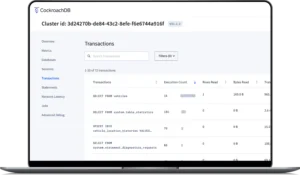
Source: CockroachDB
10. CouchDB

CouchDB is a NoSQL database that uses JSON for documents, JavaScript for MapReduce queries, and regular HTTP for an API. It is known for its ease of use, powerful replication, and ability to synchronize databases efficiently across different devices. CouchDB’s schema-free design allows for flexible data modeling, suitable for applications that require offline capabilities.
Licensing:
Apache License 2.0.
Features:
- Multi-master replication: Supports multiple masters for distributed and resilient data storage.
- Built-in conflict resolution: Automatically resolves data conflicts during replication.
- HTTP/JSON API: Provides a simple and powerful RESTful API for database access.
- MapReduce for querying and indexing: Enables complex data processing and querying.
- Offline-first mobile sync: Synchronizes data between mobile devices and central databases seamlessly.
Key use cases:
- Web applications: Powers dynamic content management and user data storage.
- Offline-first mobile applications: Provides reliable data storage and synchronization for mobile apps.
- Data synchronization: Manages data consistency across distributed systems.
- Distributed systems: Supports resilient and scalable data management across multiple nodes.
- Content management systems: Manages flexible and dynamic content structures.
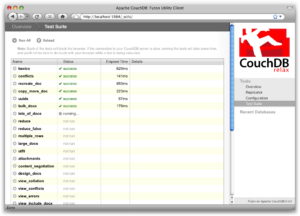
Source: CouchDB
Instaclustr: Empowering open source databases with unparalleled support
In today’s data-driven world, open source databases have become the backbone of numerous applications and systems. Their flexibility, scalability, and cost-effectiveness have made them a popular choice among developers and businesses alike. However, managing and maintaining open source databases can be a complex task thatrequires expertise and dedicated resources.
If you are looking for a go-to solution for open source database management, consider the following:
- Comprehensive Support: Our experienced database administrators and engineers provide end-to-end support for your databases, ensuring optimized performance, top-notch security, and unparalleled reliability.
- Advanced Features: Beyond basic support, Instaclustr offers automated backups, disaster recovery, and scaling capabilities, freeing you to focus on your core business.
- Secure and Robust: By adhering to the best industry practices, we ensure your data is safe and secure with us. Our services meet stringent compliance requirements, including GDPR, HIPAA, and SOC 2.
With Instaclustr, you don’t just get a service provider; you get a partner committed to your success, one that acknowledges the criticality of data availability and scalability. Embrace the power of open source databases without the worry of complexities, with us beside you to manage it all.
For more information on the Instaclustr Managed Platform check out the following pages: